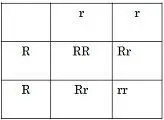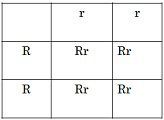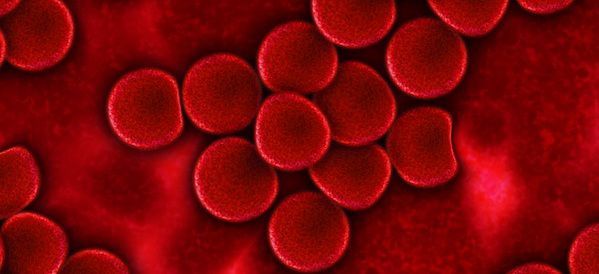When one allele for a specific trait does not completely dominate over the other allele, and therefore the phenotype produced is the complete mixture of both dominant and recessive allele is known as Incomplete Dominance. While in Co-Dominance both the allele for a specific trait are equally expressed. The resultant phenotype will express both the character equally of both participating alleles.
As stated by Gregor Mendel, traits are inherited by the transfer of genes from parents to their offspring. Genes are the segments of DNA located on the chromosomes, which are passed from one generation to the other. There are typically two alleles, for each trait or characteristics inherent by the animal cells. These paired alleles can be heterozygous (having different alleles) or can be homozygous (having identical alleles) for a given trait.
Usually, heterozygous dominance is noticed in animal cells like in the case of complete dominance, co-dominance, and incomplete dominance. Although there is the lot of confusion between incomplete dominance and co-dominance. The main difference lies in the pattern of gene expression.
Content: Incomplete Dominance Vs Co-Dominance
Comparison Chart
| Basis for Comparison | Incomplete Dominance | Co-Dominance |
|---|---|---|
| Meaning | The condition when neither of the alleles is dominant, rather combine and display a new trait by mixing of the two alleles is called as Incomplete Dominance. | The condition when both the alleles of a gene are dominant, and the traits are equally expressed, called as Co-Dominance. |
| Dominancy | Neither of both the allele is dominant and give a new trait. | Both the alleles are fully dominant. |
| Example | Snapdragon, Mirabilis Jalapa. | Roan character in cattle, A and B blood group in human. |
| Effect | Though both the allele blend their effect, one of the two is more noticeable. | Here both the alleles equally blend and show their equal effects. |
| Other features | The hybrid will always give rise to new phenotype. | No formation of the new phenotype. |
| The intermediate effect is seen, of the hybrid of the two alleles. For instance Red flower (RR) X White flower (rr) = Pink flower. | The independent effect is produced of the two alleles. Red flower (RR) X White flower (rr) = Red and White flower (Rr) | |
 |  |
|
| The new phenotype contains no allele of its own. | The new phenotype expressed is the combination of two phenotype and their alleles. |
Definition of Incomplete Dominance
When one allele for a particular trait is not able to express completely over its paired allele, is called the incomplete dominance. Hence it is said as intermediate inheritance, where the phenotype which is produced is the third type. In this, there is a combination of the phenotype of both the participating alleles.
For example, the color will be homozygous for either white (rr) or red (RR) in the snapdragon flower.
When the red (RR) homozygous flower is paired with the white (WW) homozygous flower, the result will be the pink color flower. This is the kind of incomplete dominance.
Definition of Co-Dominance
In the co-dominance, both the traits are equally expressed. Thus the resultant phenotype will express more than one character. Co-Dominance is closely related with the Incomplete Dominance where both the alleles are expressed in heterozygotes.
An example of Co-Dominance is seen in the patient suffering from sickle cell disorder. This disorder results in the abnormal shape of red blood cells. As we know in normal case the shape of the red blood cell is disc-like and biconcave, containing the protein called as hemoglobin. This hemoglobin plays the major role in transporting oxygen to the cells and other parts of the body. But due to certain mutations in the hemoglobin gene result in the sickle cell.
This (sickle cell disorder) is the abnormal condition of the hemoglobin, forms the sickle shape of the blood cells. These sickle shapes get stuck to the blood vessels, also preventing the normal flow of the blood. So the individual having this disease are the homozygous recessive for the sickle cell hemoglobin gene.
But the carriers of the sickle cell disease will not face the disease, as their trait of this disease is heterozygous, which will inherit one sickle cell hemoglobin gene and one sickle cell gene. This is due to the co-dominancy regarding the cell shape, which contains one normal hemoglobin gene and one sickle cell hemoglobin gene.
Key Differences Between Incomplete Dominance and Co-Dominance
Following are the key differences between the incomplete dominance and co-dominance:
- Incomplete Dominance is the condition when neither of the alleles is dominant, rather combine and display a new trait by mixing of the two alleles. Co-Dominance is the condition when both the alleles of a gene are dominant, and the traits are equally expressed.
- In Incomplete Dominance, neither of both the allele is dominant and give a new trait. In Co-Dominance both the alleles are fully dominant.
- Incomplete Dominance is seen in Snapdragon, Mirabilis Jalapa, while Co-Dominance is seen in Roan character in cattle, A and B blood the group in human.
- In the case of Incomplete Dominance both the allele blend their effect, but one of the two is more noticeable. But in the case of Co-Dominance, both the alleles equally blend to show their equal effects.
- The hybrid will always give rise to new phenotype, even the intermediate effect is seen of the hybrid of the two alleles, and the new phenotypes contain no alleles of its own in case of incomplete dominance. On the contrary, there is no formation of new phenotype; even the independent effect is produced of the two alleles in Co-Dominancy.
Conclusion
The study of genetics is challenging, but due to many big contributions, it is understandable too. We came to know that in genetic inheritance, two different alleles are inherited for each trait from each parent to the offspring. The one which expresses itself becomes dominating allele while the hidden one is called as the recessive allele. We compare the two types of dominance, among the three to mark the differences between them and to make it much clear.




sarah hayes says
Great article.
Angelina Smith says
This article was useful! Thanks.